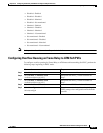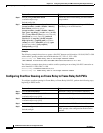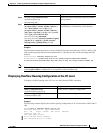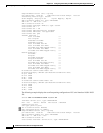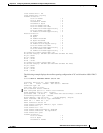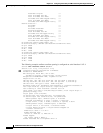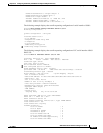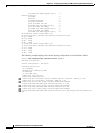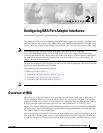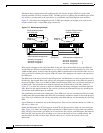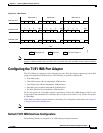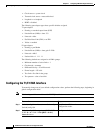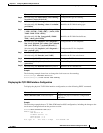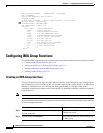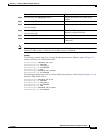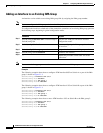
CHAPTER
21-1
ATM Switch Router Software Configuration Guide
OL-7396-01
21
Configuring IMA Port Adapter Interfaces
This chapter describes inverse multiplexing over ATM (IMA) and the steps required to configure the
IMA port adapters in the Catalyst 8540 MSR, Catalyst 8510 MSR, and LightStream 1010 ATM switch
routers. These port adapters group multiple low-speed links into one larger virtual trunk or IMA group.
Note This chapter provides advanced configuration instructions for the Catalyst 8540 MSR,
Catalyst 8510 MSR and LightStream 1010 ATM switch routers. For complete descriptions of the
commands mentioned in this chapter, refer to the ATM Switch Router Command Reference publication.
For hardware installation and cabling instructions, refer to the ATM and Layer 3 Port Adapter and
Interface Module Installation Guide.
For more information on how to configure your IMA-specific network equipment, refer to the Cisco IOS
publications on the Documentation CD-ROM.
This chapter includes the following sections:
• Overview of IMA, page 21-1
• Configuring the T1/E1 IMA Port Adapter, page 21-3
• Configuring IMA Group Functions, page 21-6
• Configuring IMA Group Parameters, page 21-13
Note IMA is only possible on switches with FC-PFQ installed.
Overview of IMA
IMA allows you to aggregate multiple low-speed links into one larger virtual trunk or IMA group. An
inverse multiplexer appears to your ATM switch router as one logical pipe. This IMA group provides
modular bandwidth for user access to ATM networks for connections between ATM network elements
at rates between the traditional order multiplex levels, such as between T1 or E1 and T3 or E3.
IMA involves inverse multiplexing and demultiplexing of ATM cells in a cyclical fashion among links
grouped to form a higher bandwidth logical group with a rate approximately the sum of the link rates.
This group of links is called an IMA group.
Inverse multiplexing in the transmit direction controls the distribution of cells onto the group of physical
links available to the IMA group interface. It also handles differential delays and deals with links that
are added or dropped, or fail and are later restored. In the receive direction, the IMA interface performs



